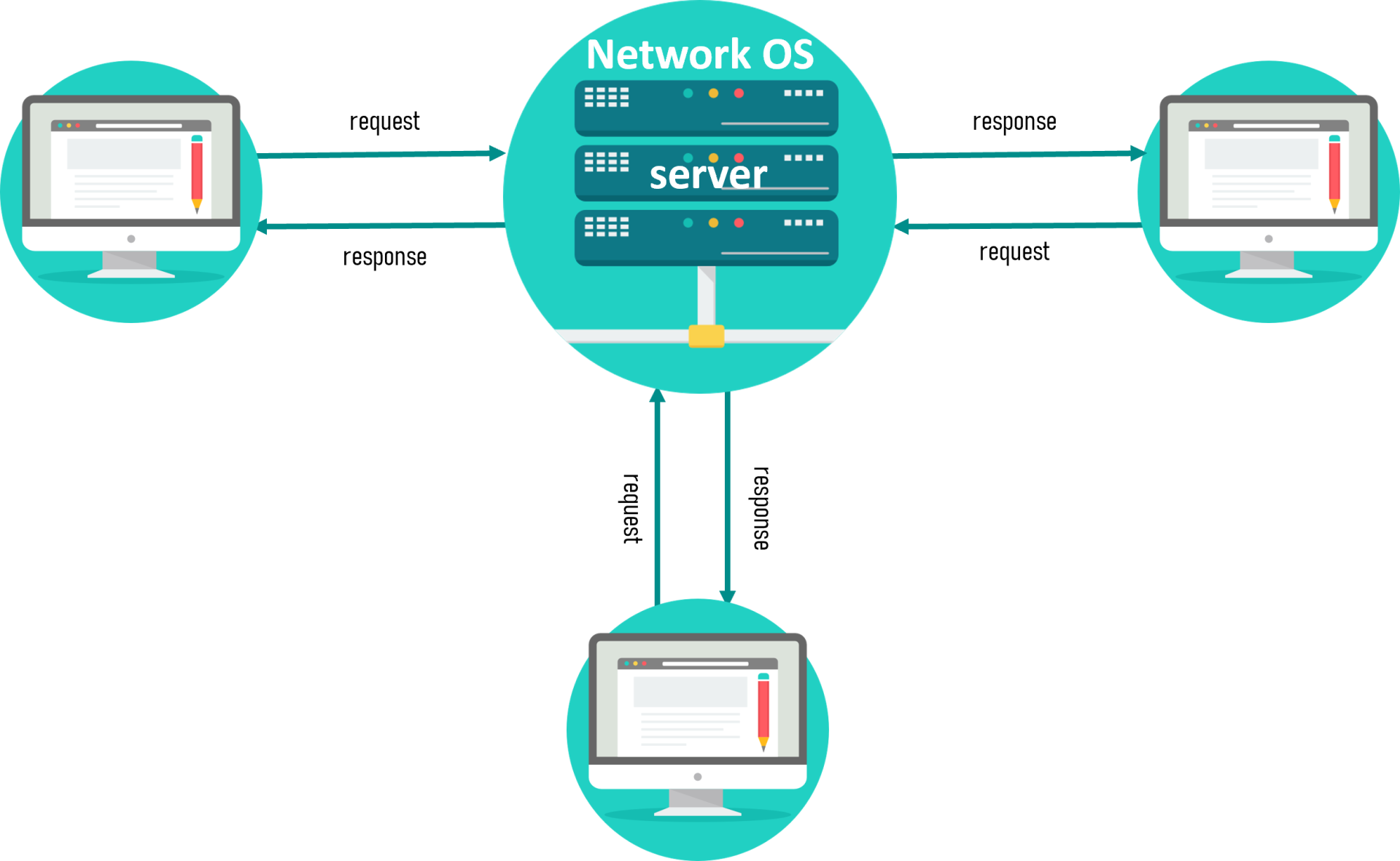A network operating system (OS) is a computer operating system (OS) designed and used primarily to support workstations and personal computers. Sometimes, older terminals are located on a local area network (LAN).
Takes. A network operating system allows multiple devices on a network to communicate with each other and share resources.
Hardware equipment typically uses a network operating system, including personal computers, printers, servers, and file servers on a local network that connects them. The network operating system provides essential network services and features and supports incoming requests concurrently in a multi-user environment.
Since operating systems were not specifically designed for use in networks in the beginning, network operating systems emerged as solutions for single-user computers. They later became capable of supporting various network equipment.
Types of network operating systems

Today, there are two basic types of network operating systems: peer-to-peer NOS and client/server NOS.
- Peer-to-peer network operating systems allow users to use and share network resources in a shared, accessible network location. In this architecture, all devices have the same performance level and share the same resources. Typically, peer-to-peer works best for small- to medium-sized LAN implementations and is cheaper and more cost-effective to set up.
- Client/server network operating systems provide users access to resources through a server. In this architecture, all operators and applications are provided through a single file server that can provide help and services to clients regardless of their physical location. The advantage of the client/server model is that the network is centrally controlled, making it easier to make changes or add or subtract resources and technologies. Client/servers usually have a high implementation cost, and their technical maintenance process requires a sufficient budget.
Standard features of network operating systems
Network operating systems have similar features that significantly increase the process of user management, system maintenance, and resource performance. Among the standard features of these operating systems, the following should be noted:
- We provide basic network protocols, detailed processor support, and the ability to process different requests simultaneously.
- Printer and application sharing.
- Providing a shared file system and database sharing
- Network security features include user authentication and access control.
- directory
- Backup and web services.
- The ability to connect networks to the Internet
Examples of network operating systems
Network operating systems are classified as software that accurately provides users with network features. From network operating systems and service providers in this field, the following should be mentioned:
- Artisoft’s LANtastic is a user-friendly, straightforward network operating system supporting most PC operating systems.
- Banyan’s VINES uses a client-server architecture to handle requests and provide specific services.
- Novell’s NetWare was the first network operating system released based on the XNS protocol architecture.
- Microsoft’s LAN Manager is a server application developed to run under the Windows operating system. However, most of the LAN Manager functionality is now built into the Windows operating system itself.
In addition, some multipurpose operating systems, such as Windows Server and various Linux server distributions, are also available on the market.
These enable the penalties needed to implement and manage access to resources based on user-permissible permission to video features and services, so working with a wide range of clients under the network is no problem.
A network operating system (NOS) is an OS designed to manage and coordinate multiple devices on a local area network (LAN), enabling communication and resource sharing. While most modern OSes now include built-in network functionalities, NOSes once played a critical role in network management. They can be categorized into:
- Peer-to-Peer (P2P): Allows direct resource sharing between devices for small to medium-sized LANs.
- Client-Server: Centralizes resources on a server, offering more substantial control but requiring more maintenance.
Features typically include user management, hardware detection, printer and application sharing, network security, and directory services.
Examples of NOS include Microsoft Windows Server, Unix OS, Cisco Internetwork OS (IOS), and Junos OS. Notable discontinued NOSes include Novell NetWare, LANtastic, and Microsoft LAN Manager.
FAQ
What is a Network Operating System (NOS)?
A Network Operating System (NOS) is software that manages network resources and allows multiple computers to communicate, share files, and access devices like printers over a network. It provides centralized control and facilitates network operations.
How is a Network Operating System different from a regular operating system?
Unlike regular operating systems that manage a single computer's hardware and software, a Network Operating System focuses on managing and coordinating multiple computers within a network, offering features like user access control, network security, and resource sharing.
What are some examples of Network Operating Systems?
Examples of Network Operating Systems include Microsoft Windows Server, UNIX/Linux (when configured for networking), Novell NetWare, and Red Hat Enterprise Linux. These systems are commonly used in enterprise environments.